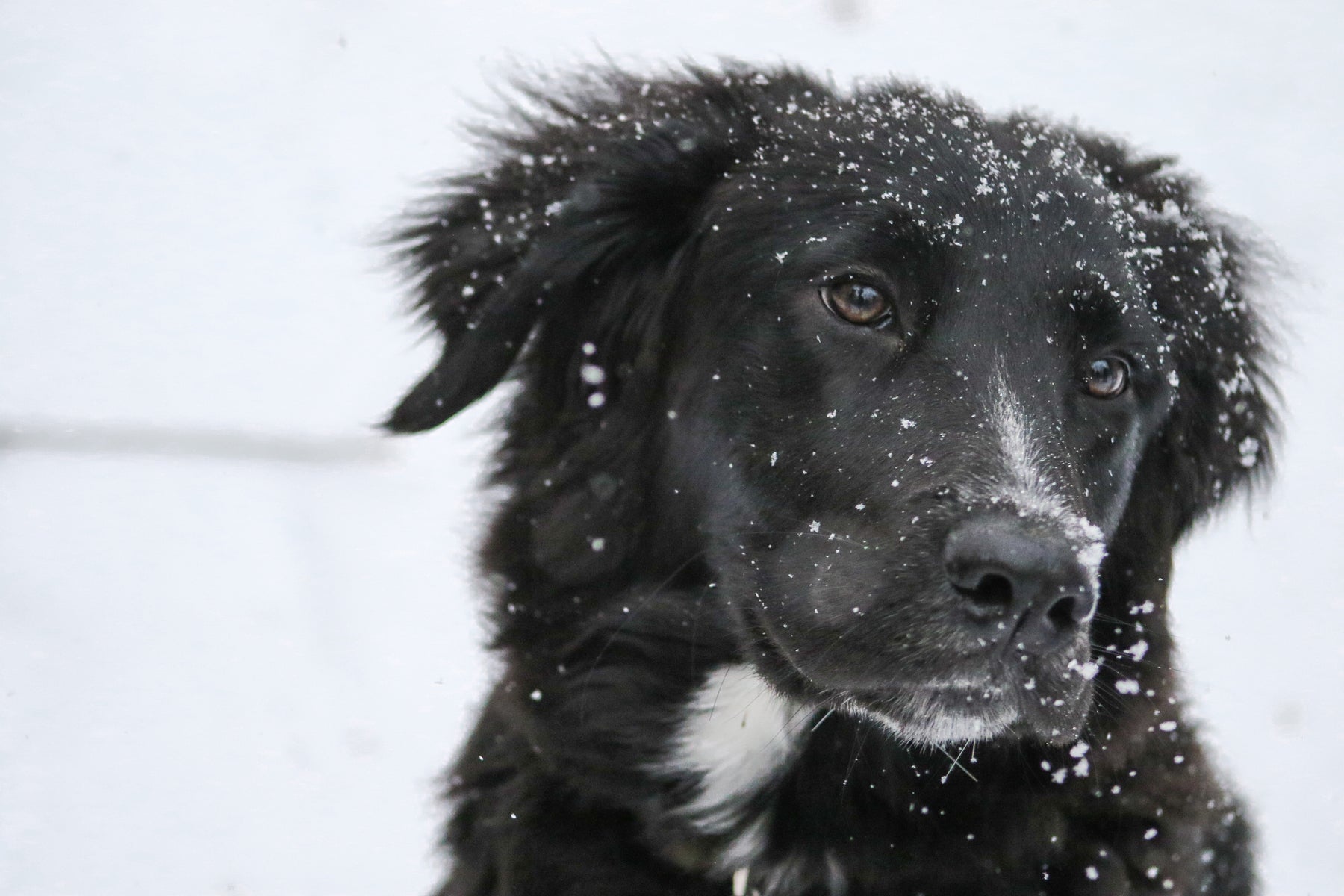Cold-Temperature Guidelines for Dogs

Being outside is great for a dog’s physical and mental health. Walking, running, looking, sniffing, listening, and meeting old or new friends are all activities that help keep dogs happy and healthy. But what should we do when it’s cold outside? When do the risks of spending time outside outweigh its benefits? Let’s look at the dangers associated with cold weather and how we can still safely enjoy the great outdoors with our dogs in the winter.
Dogs Are Individuals
A temperature that feels comfortable to one dog might make another shiver. There are a few variables that affect how dogs respond to the cold.
Coat type
Dogs with thick, double-layered coats tend to be the most cold-tolerant (think Siberian Huskies, Newfoundlands, and Samoyeds). Many of these breeds originated in northern climates and have attributes that allow them to thrive when temperatures drop. However, dogs with exceptionally thin coats, like the Basenji and Xoloitzcuintli, may suffer in the cold and tend to do better when it’s warmer outside.
Coat color
On a clear day, black, brown, or other dark-coated dogs can absorb significant amounts of heat from sunlight, keeping them warmer in comparison to dogs with light-colored coats.
Size
Dogs lose most of their heat through their skin. Small dogs have a larger surface area to volume ratio compared to big dogs, which means, relatively speaking, they have a bigger surface to lose heat through and a smaller area "inside" to hold on to heat. Therefore, small dogs get colder faster than large dogs, all other things being equal.
Weight
Body fat is a good insulator, so thin dogs become cold quickly. However, the health risks of being overweight far outweigh any benefits, so don’t let your dog pack on the pounds in preparation for winter.
Conditioning
We’ve all experienced this one. After the heat of summer, 55 F can feel frigid, but after a long, cold winter, the same temperature can make us break out a pair of shorts and a T-shirt. Dogs that are used to the cold handle it much better than those that aren’t.
Age and Health
Puppies, canine senior citizens, and dogs with underlying health problems cannot regulate their body temperatures as well as healthy dogs in the prime of their lives. Be sure to protect vulnerable dogs from the cold.
Don’t Just Look at the Temperature
The temperature as it registers on a thermometer isn’t the only environmental factor that affects how dogs feel the cold. Consider other factors, including:
Wind chill
A brisk breeze can cut through a dog’s coat, greatly decreasing its ability to insulate and protect against the cold.
Dampness
Rain, snow, heavy fog, going for a swim—any form of dampness that soaks through the fur can quickly chill a dog even if the air temperature is mild.
Cloud cover
Cloudy days tend to feel colder than sunny days, since dogs can’t soak up the sun and warm themselves.
Activity
If dogs are going to be very active while outside, they may generate enough extra body heat to keep them comfortable even if the temperature is quite low.
Cold-Temperature Guidelines for Dogs
While broad generalizations are difficult, cold should not become a problem for most dogs until the temperature falls below 45 F, at which point some cold-averse dogs might begin to feel uncomfortable. When temperatures drop under 32 F, small breed dogs, dogs with thin coats, or very young, old, or sick dogs could be in danger if they spend too much time outdoors. Once temperatures drop under 20 F, all pet parents need to be aware that their dogs could develop cold-associated health problems like hypothermia or frostbite when outside for extended periods of time.
The best way to monitor your dog when they’re outside in the cold is to keep a close eye on their behavior. If you notice your dog shivering, acting anxious, whining, slowing down, searching out warm locations, or holding up one or more paws, it’s time to head inside and warm up.
